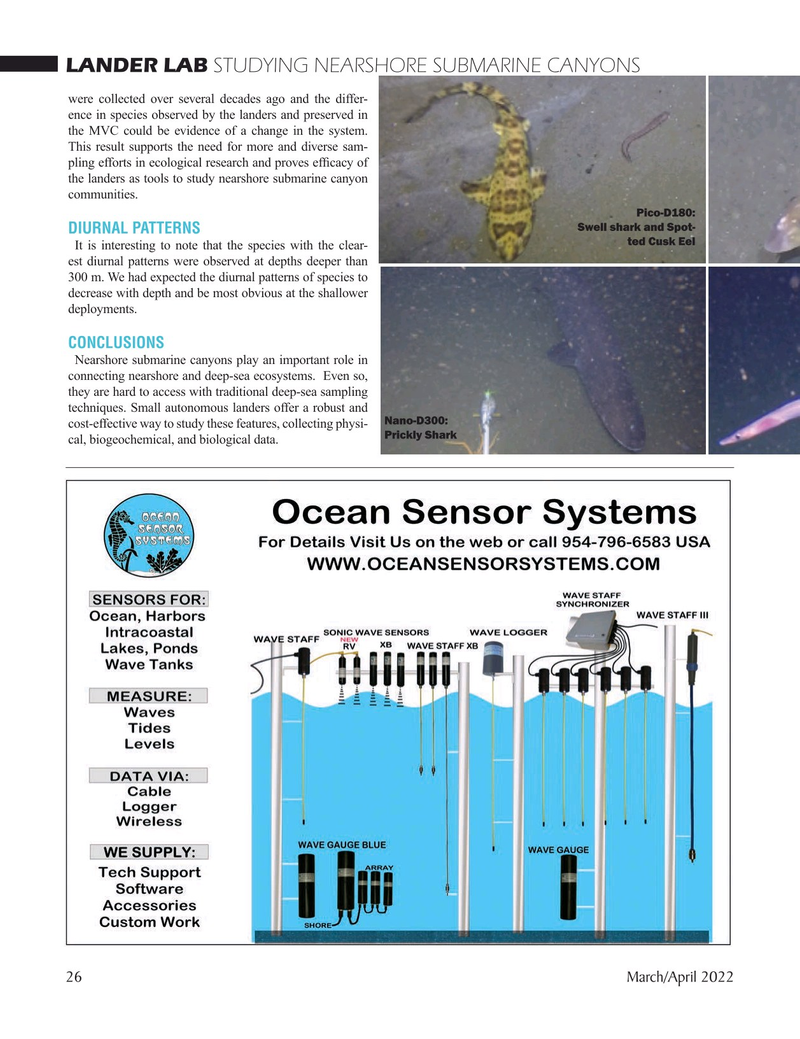
Page 26: of Marine Technology Magazine (March 2022)
Read this page in Pdf, Flash or Html5 edition of March 2022 Marine Technology Magazine
LANDER LAB STUDYING NEARSHORE SUBMARINE CANYONS were collected over several decades ago and the differ- ence in species observed by the landers and preserved in the MVC could be evidence of a change in the system.
This result supports the need for more and diverse sam- pling efforts in ecological research and proves ef? cacy of the landers as tools to study nearshore submarine canyon communities.
Pico-D180:
Swell shark and Spot-
DIURNAL PATTERNS ted Cusk Eel
It is interesting to note that the species with the clear- est diurnal patterns were observed at depths deeper than 300 m. We had expected the diurnal patterns of species to decrease with depth and be most obvious at the shallower deployments.
CONCLUSIONS
Nearshore submarine canyons play an important role in connecting nearshore and deep-sea ecosystems. Even so, they are hard to access with traditional deep-sea sampling techniques. Small autonomous landers offer a robust and
Nano-D300: cost-effective way to study these features, collecting physi-
Prickly Shark cal, biogeochemical, and biological data.
26 March/April 2022
MTR #3 (18-33).indd 26 2/25/2022 9:32:37 AM

 25
25

 27
27
